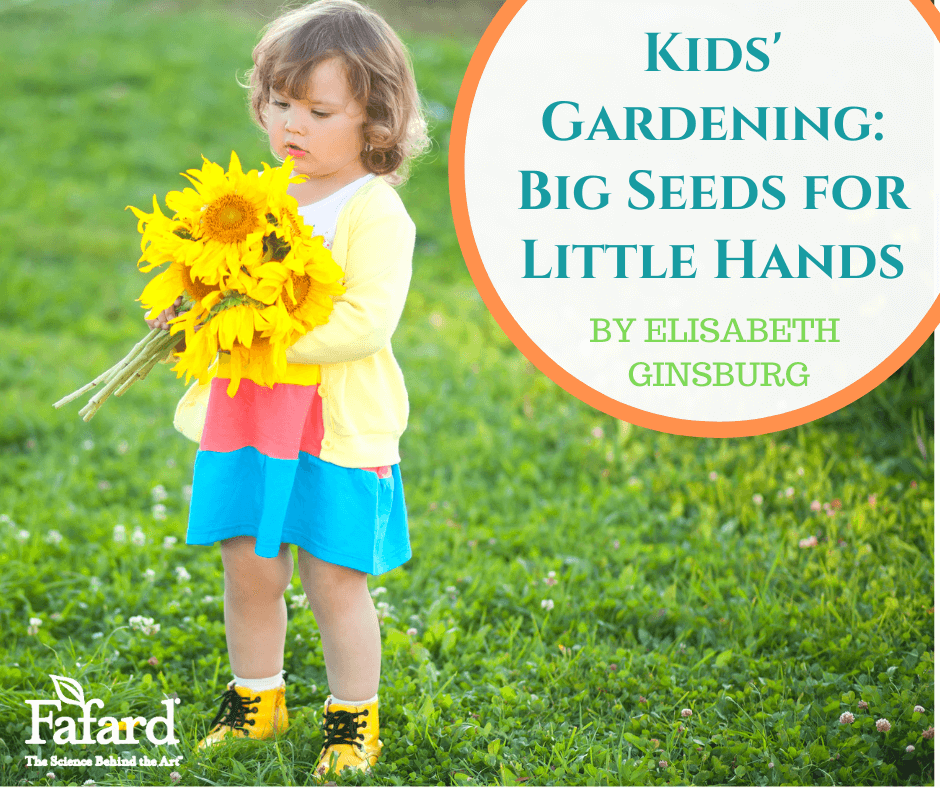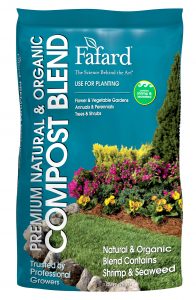
Kids just naturally love dirt—ask any parent. When you encourage children to put their hands in that dirt and plant seeds, you are growing future gardeners. But as with any learning experience, kids are more likely to take to gardening if you help make it fun and accessible. The best way to start is with a packet of big seeds.
Start by talking about what the child wants to grow. Some children naturally gravitate to colorful flowers, while others might like the idea of planting and harvesting their own Halloween pumpkins. If your child is very young or unsure about the whole project, start with one easy plant type and see what happens. More than one gardener started his or her horticultural life with a single bean planted in a paper cup.
Handling small seeds can be frustrating for small people, so make it easy by choosing plants that grow from the kind of large seeds that are simple to handle, plant, and love. If the child likes flowers, annual sunflowers (Helianthus) are a wonderful way to start, featuring large seeds and a wide array of varieties to choose from.
Traditional giant types are inspiring to watch, rising to 6 feet or more, with huge, yellow-petaled flowerheads. Some of the shorter hybrid types boast petals in shades from palest cream through yellows, oranges, and reds—perfect for enjoying up close, or for arranging in the empty jam jars that seem to lurk in so many kitchen cupboards.
Other good ornamental varieties include low-growing nasturtiums (Tropaeolum) and brightly colored Mexican sunflowers (Tithonia rotundifolia). If ground space is limited, plant climbers like scarlet runner beans (Phaseolus coccineus). Nasturtiums can also climb or sprawl from hanging baskets if you pick the right varieties.
The world of edible species is full of large-seeded plants. Small children often like peas—either traditional or snap varieties—which also feature lovely flowers. Beans of all sorts are another option. Let little ones help you build simple supports for these sprawling crops. Pumpkins, from the cute miniature types to bright orange behemoths, also start with large seeds. Hilling up soil for planting mounds can be, literally, child’s play. Other members of the cucurbit family, like squashes and melons, are also possibilities.
If your child insists on growing tiny-seeded edibles like carrots or greens, try to find vendors that offer pelleted seeds. These easy-to-handle products consist of tiny seeds encased in pea-like pellets of inert material. Once the pellets go into the ground, moisture quickly dissolves the coating and the seeds sprout normally.
If you are working with very young children, supervise carefully to make sure that they do not put any seed—even those of edible crops—in their mouths.
Before planting large-seeded edible or ornamental varieties, parents should prevent later disappointment by doing a bit of prep work. Suit your crop to your particular situation and make sure that sun-loving varieties will receive enough light. Can you dedicate a small portion of your garden to your child’s plants? If not, container growing is always an option. Encourage your child to have a sense of ownership of the plot or container, so he or she will take an extra measure of pride in the finished crop.
Give big seeds a leg up by growing them in planting beds amended with a nutrient-rich product like Fafard® Premium Natural & Organic Compost. For seed starting, choose Black Gold® Seedling Mix, a quality seed-starting medium that grows robust seedlings fit for little hands to plant. Some large seeds, like nasturtiums, sunflowers, and morning glories, benefit from an overnight soak to soften hard outer shells before planting.
Once the planting is done, check the beds or containers every day. Encourage the children to watch and tend their plants, but be sure to supervise the watering. Overenthusiastic watering will swamp young plants, leading to tears later on.
Give older children an idea of how long those big seeds should take to germinate, sprout leaves and produce flowers or fruits. Check off days on a calendar or whiteboard to help manage expectations. Sometimes the longest days are those just before flower buds open or edible crops are ready to harvest. Keep frustration at bay by letting children draw or photograph their young plants each day.
When harvest time finally arrives, celebrate. Invite friends over to see the culmination of all the gardening effort. Harvest and prepare the edible crops and have the young growers help as they are able. Take pictures of both children and crops and cherish the occasion. Remember that the child who plants sunflowers today may end up as a horticulturist in a few short years.






